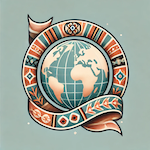Inside Remote Communities: A Day in the Life
Hidden in Europe's rugged corners, remote villages offer a glimpse into life where time moves at its own pace. These places, from the windswept Shetland Islands of Scotland to the sun-dappled slopes of the Slovene Karst region, preserve traditions rooted in history yet touched by modernity. Visitors willing to journey off the beaten track can witness lives shaped by the land, community ties, and enduring customs that define these unique enclaves.
Morning: Waking with the Land
In many of these secluded regions, the day begins early, dictated not by alarm clocks but by the rhythm of nature. On the Scottish Shetland Islands, as the North Sea breeze cuts through the morning mist, fishermen prepare their boats for the day's catch. Similarly, in Galicia, Spain, farmers tending ancient Celtic-rooted farmlands rise with the first light to care for livestock and inspect stone-walled terraces that have fed families for generations.
Further east, in the Balkans, mountain hamlets awaken to the sound of cowbells echoing through alpine valleys. Albanian villagers, living amid relics of Cold War bunker architecture, tend to their small plots, growing herbs and vegetables while maintaining structures that are now part of the landscape's silent story. Despite the simplicity, mornings are filled with purpose, weaving daily necessity with cultural heritage.
Midday: Community and Craft
As the sun climbs higher, communal life becomes more visible. In the Basque Country, renowned for its culinary traditions, midday means gathering in local taverns or homes to prepare hearty meals. Here, families still make traditional pintxos, accompanied by cider poured from great heights to aerate the drink, a spectacle that is both communal and cultural.
Meanwhile, in Transylvania, Romania, artisans carefully craft intricate wood carvings and textiles inspired by regional folklore. Workshops double as social spaces, where elders pass skills down to younger generations, ensuring that Dracula's shadow is not the only story this region tells. The rhythms of work and community blend seamlessly, keeping centuries-old artistry alive.
Sami Artisans of the North
High above the Arctic Circle, the Sami people of Sweden, Norway, and Finland shape their days around reindeer herding and traditional crafts. Working with reindeer antler and leather, Sami artisans create jewelry and tools that reflect their nomadic history and deep respect for nature. These objects are not merely decorative; they carry stories of survival and spiritual connection to the land.
Evening: Gathering and Storytelling
As dusk settles, villages come alive with gatherings that bind the community. In Welsh hamlets, evenings often feature storytelling sessions in local pubs or around hearths, where tales are told in the Welsh language, helping to preserve this ancient tongue. Visitors immersed in such moments gain not only entertainment but a deeper understanding of local identity.
Festivals and evening celebrations also play a vital role. During the Viking Festival in the Shetland Islands, for example, the community lights up with torches, music, and reenactments that celebrate Norse heritage. This lively event, filled with spectacle and camaraderie, draws both locals and visitors into a shared cultural experience that spans centuries.
Flavors of the Slovene Karst
In Slovenia's Karst region, evenings are for savoring robust wines and rustic dishes such as prosciutto and hearty stews. Wine cellars carved deep into limestone hills open their doors to visitors, offering a warm welcome and a chance to experience the region's distinct culinary heritage. Conversations flow as freely as the wine, with locals eager to share tales of their land's resilience and bounty.
Bridging Tradition and Modern Life
While modernity has inevitably touched these remote communities, it has not erased their essence. Internet access allows younger residents to connect with the wider world, yet many remain committed to preserving their heritage. In Belgium, Flemish villages balance their celebrated art routes with local initiatives that teach traditional painting techniques to new generations, ensuring that artistic legacies endure alongside contemporary expression.
Tourism, when approached respectfully, plays a positive role in this balance. Thoughtful visitors are welcomed not as intruders but as participants in sustaining local traditions. Whether joining a Sami crafts workshop or attending a culinary tour in the Basque Country, travelers find authentic experiences that foster appreciation and understanding between cultures.
Invitation to Discover
For those seeking more than typical tourist trails, these remote European communities offer an invitation to slow down and engage deeply. Each village, each craft, and each story weaves a richer tapestry of Europe's diverse heritage. Embracing these experiences means not only witnessing history but becoming part of its living continuation, even if just for a day.
As you explore these hidden corners, you carry away more than memories—you carry the voices of artisans, the warmth of communal meals, and the quiet beauty of landscapes shaped by human hands over countless generations. These are the treasures of Europe's remote communities, waiting to be discovered by the curious and the respectful traveler alike.
